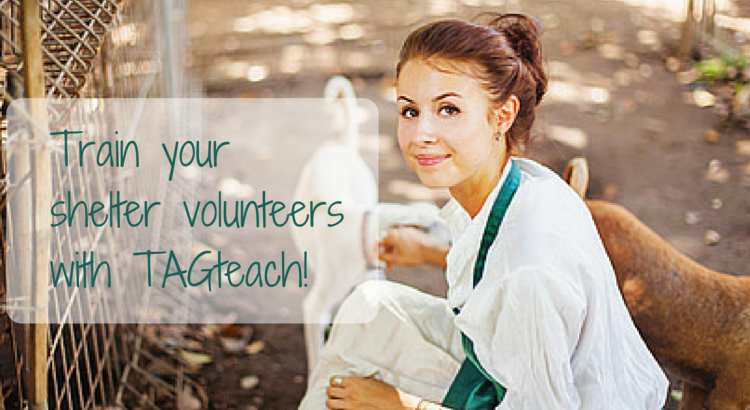By Marissa Marino
Volunteers are one of my favorite parts about working for animal welfare non-profits. The community that is generated for a single mission can sometimes be astounding. There are a variety of reasons why people engage in volunteer activities. Some people volunteer to give back to their community, others volunteer since they cannot have pets of their own and others hope to develop friendships along the way. One common thread I see is people longing to learn new things and expand themselves. So let’s give them what they want! My philosophy is to empower volunteers through education in order to develop a dedicated and helpful team for the staff as well as the animals.
For the last 3 years, I directed the behavior and training department at the East Bay SPCA in Oakland & Dublin, CA. During that time I developed nine volunteer programs to help support our canine and feline populations. A few of these programs focused on canine and feline enrichment, assisting dog training classes, canine jogging and exercise as well as canine behavior modification.
Creating Educational Materials
In order to develop these programs I had to create educational materials as well as hands on training curriculum. There were many skills the volunteers needed to learn in order to safely interact with our animals. Some of these skills included what to do when an animal mouths you, exiting and entering the kennel as well as offering an animal space and time if they appear fearful. I have found that breaking things down into small steps for volunteers can be most helpful when teaching a new skill. I used the principles of TAGteach in order to help each learner absorb the information and develop the necessary handling skills.
Here’s a video example of using TAGteach to teach a volunteer to safely exit a kennel:
Note that the tag point is “blue to blue”. This means that the blue tape on the learner’s shoe, touches the blue tape on the floor. The tag point is available three times during the exercise, since there are three pieces of tape showing foot placement. There are two inside the room and one outside (not shown on camera). In any given trial, there is only ever one tag point, but that tag point can occur more than once, as in this case.
Usually we use a tagger (or clicker) to indicate a correct response, but here they are using the word “tag”. Depending on the learner and the learning environment, it is sometimes preferable to use a verbal tag, but generally a neutral sound (such as a click) gets better results and is preferred by learners.
Here the teacher tags herself first to make it clear to the learner. Then the learner tags the teacher, so that the teacher knows for sure that the learner understands. Then the teacher tags the learner. Finally once the learner has developed fluency (which usually takes a few repetitions), the learner can teach another learner.
Related Webinar
Learn more in a one hour webinar with Marissa where she discusses handling skills all volunteers should know when working with animals. She also showcases videos demonstrating volunteers learning these and other skills. Since every shelter is different, it is important for you to take the knowledge you learn from this webinar and be able to apply it to your facility. Therefore, Marissa discusses how to develop TAGteach trainings for your own volunteers so you can all reap the benefits of this highly efficient and effective way of teaching.
